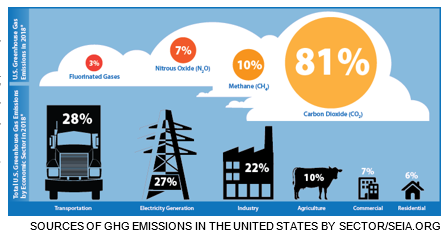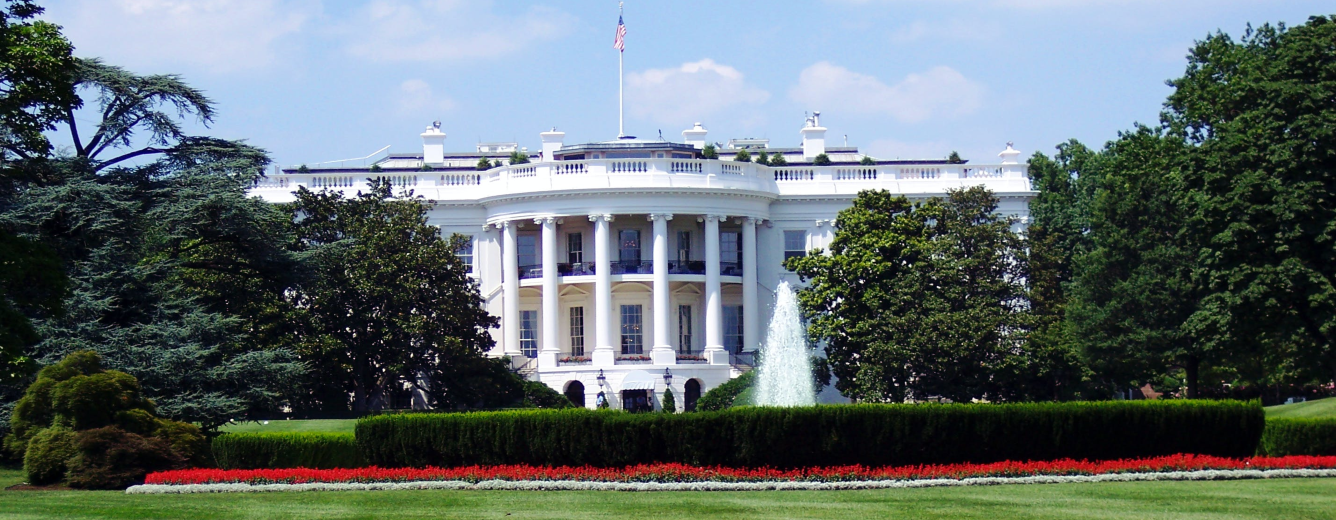On January 20, 2021, hours after President Biden took the oath of office, he acted swiftly in signing 17 Executive Orders, one of which focused on tackling environmental issues: “Executive Order on Protecting Public Health and the Environmental and Restoring Science to Tackle the Climate Crisis.”
Now this is the kind of stuff that we deal with on a daily basis, but even for us figuring out exactly the potential impacts of the Executive Order can be a bit muddled. So to save you from reading the 3,300-word Executive Order, here’s our summary of the key changes and our take on what they might mean for Federal agencies.
1. Administration’s Environmental Policy and Key Goals.
Section 1 identifies the administration’s key goals:
- Improve public health and environment;
- Ensure access to clean air and water;
- Limit exposure to dangerous chemicals and pesticides;
- Hold polluters accountable, including those who disproportionately harm communities of color and low-income communities;
- Reduce greenhouse gas emissions;
- Bolster resilience to impacts of climate change;
- Restore and expand our national treasures and monuments; and
- Prioritize both environmental justice and creation of well-paying union jobs necessary to deliver these goals.
What this means?
The majority of these goals are standard items often identified in environmental goals, but what stands out to us is the highlight on improving environmental justice, greenhouse gas emissions, and actually uttering the words “climate change” again.
2. Immediate Review of Agency Actions Taken the Past 4 Years.
Section 2 of the Executive Order calls for all Federal agencies to review all regulations and policies passed the past four years that are or may be inconsistent with the goals identified above.
The Executive Order also calls out suspending or revising specific regulations ranging from:
- emissions standards for the oil and gas sector
- fuel economy standards for certain cars
- building efficiency standards
- emissions standards for coal- and oil-fired electrical steam generating units
What this means?
Agencies will be busy reviewing regulations and policies passed during the Trump Administration and determining which ones might be inconsistent with the above goals in Section 1. This section tags the Environmental Protection Agency to propose new regulations primarily to address air quality issues and emissions standards.
What this means overall is we’ll see lots of new developments specifically with air quality issues. What’s interesting is that this section specifically instructs agencies to seek input from not only the general public and stakeholders but also specifically labor unions and environmental justice organizations. Perhaps we’ll see more targeted outreach to these groups beyond the standard public comment efforts to address environmental justice as well as to balance the creation of well-paying jobs and improve the economy.
What this means in our NEPA world is that the Council on Environmental Quality (CEQ) will be taking a second look at their recently overhauled NEPA regulations effective September 2020 to determine whether they may want to tweak the regulations. Our guess is that might mean changes to reversing the removal of cumulative effects analysis from NEPA documents are on the horizon.
3. Restoring National Monuments.
Section 3 requires a review of monument boundaries that were established during the Trump Administration that basically called for the shrinking of Bears Ears, Grand Staircase-Escalante National Monuments, and the opening of Northeast Canyons and Seamounts Marine National Monument to commercial fishing.
What this means?
There is pending litigation related to these National Monuments and that may delay the completion of the above actions.
4. Moratorium on Arctic Refuge.
Section 4 places a temporary moratorium on all oil and gas leasing in the Arctic National Wildlife Refuge and restores the original withdrawal of certain offshore areas in Arctic waters and the Bering Sea from oil and gas drilling.
What this means?
Recently the Bureau of Land Management signed and issued leases that opened lands for drilling; the moratorium doesn’t seem to be able to change that.
On another note, language in this section of the Executive Order alluded to “the inadequacy of the environmental review required by the National Environmental Policy Act [NEPA]” which again indicates there may be additional changes by CEQ and recently overhauled NEPA regulations.
5. Accounting for the Benefits of Reducing Climate Pollution.
Section 5 identifies the need to estimate the monetized damages associated with incremental increases in greenhouse gas emissions. It establishes the Interagency Working Group specifically to work on the social cost of greenhouse gases and identifies the interagency members, mission, and the need to determine how to calculate the “social cost of carbon (SCC),” “social cost of nitrous oxide,” and the “social cost of methane.”
What this means?
Greenhouse gas analysis is back! Well, actually we were still considering greenhouse gas emissions in our NEPA analyses but what’s different is the attention that is being re-directed to determine the social cost of greenhouse gas emissions. This will likely help increase support in factoring greenhouse gas emissions because there will be a dollar amount that can be uniformly applied to the cost of climate change decisions.
6. Revoking the March 2019 Permit for the Keystone XL Pipeline.
Section 6 revokes Trump’s 2019 permit for the controversial Keystone XL pipeline.
What this means?
While Tribal Nations and environmental organizations are cheering on the Biden Administration on this one, petroleum executives are concerned that this is a significant step backwards for environmental and economic progress. This decision will likely prompt more public and Tribal engagement leading to more transparency and consideration for future energy projects.
7. Other Revocations.
Section 7 revokes a slew of Executive Orders and Presidential Memorandums to include:
- Executive Order 13766, Expediting Environmental Reviews and Approvals for High Priority
Infrastructure Projects
- Executive Order 13778, Restoring the Rule of Law, Federalism, and Economic Growth by Reviewing the “Waters of the United States” Rule
- Executive Order 13783, Promoting Energy Independence and Economic Growth
- Executive Order 13792, Review of Designations Under the Antiquities Act
- Executive Order 13795, Implementing an America-First Offshore Energy Strategy
- Executive Order 13868, Promoting Energy Infrastructure and Economic Growth
- Executive Order 13927, Accelerating the Nation’s Economic Recovery from the COVID-19 Emergency by Expediting Infrastructure Investments and Other Activities
- Executive Order 13834, Efficient Federal Operations, revoked except for sections 6, 7, and 11
- Presidential Memorandum of April 12, 2018 (Promoting Domestic Manufacturing and Job Creation Policies and Procedures Relating to Implementation of Air Quality Standards)
- Presidential Memorandum of October 19, 2018 (Promoting the Reliable Supply and Delivery of Water in the West)
- Presidential Memorandum of February 19, 2020 (Developing and Delivering More Water Supplies in California)
The Executive Order also has some NEPA homework assigned to CEQ to:
- Reconsider replacing Executive Order 13708, Establishing Discipline and Accountability in the Environmental Review and Permitting Process for Infrastructure Projects.
- Updating and finalizing CEQ’s guidance on Consideration of Greenhouse Gas Emissions and the Effects of Climate Change in NEPA reviews.
What this means?
Roll up your NEPA sleeves because this section is where a few specific NEPA-related actions are affected. What most of the revocations mean is transportation and infrastructure projects that were put on a “fast-track” through the NEPA process won’t be getting the same special treatment/priority as they were before. With the recent NEPA changes of fewer pages and shorter timelines made in September 2020, this will still help to expedite some federal actions but not quite at the hyper speed level they were enjoying before.
Another good development is the direction for CEQ to finalize their greenhouse gas emissions 
A good tip is to review your on-going NEPA documents to make sure you no longer have references and/or analyses relating to these now-revoked Executive Orders.
In just his first few hours in office, President Biden has asserted his focus on science and the environment. We see this action as a sign of future changes to come. We applaud the renewed focus on good science, good planning, smart regulation, and increased consideration for historically marginalized populations. As the Biden Administration continues to address these issues, we will keep you posted on when they happen and what they mean to you and your projects.
Contact us today to help guide your projects to be compliant with the latest environmental updates! For further information, e-mail me at melanie.hernandez@scoutenv.com.









 Infrastructure Projects
Infrastructure Projects










